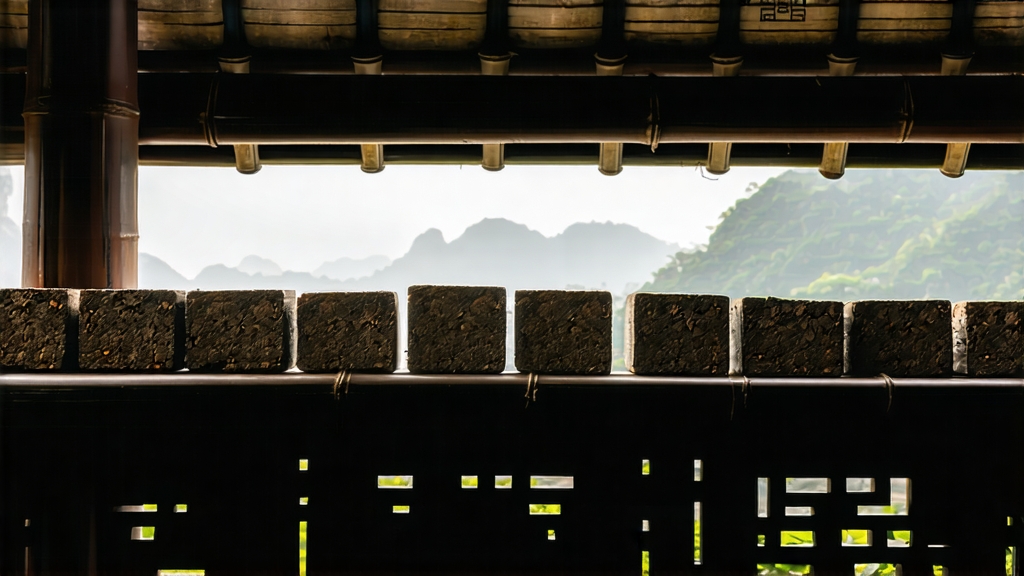
Tucked away in the subtropical mountains of Guangxi Province, Liu Bao (literally “Six Forts”) is the quietest celebrity of China’s dark-tea family. While Pu-erh grabs headlines and auction records, Liu Bao has spent four centuries perfecting the art of subtlety, emerging from bamboo baskets with a mellow, betel-nut sweetness that once fueled the porters of the ancient Tea-Horse Road. Today it is cherished by Cantonese tea lovers for its ability to settle the stomach after dim sum and by aging connoisseurs who compare its evolution to that of a Premier Cru Burgundy.
Historical footprints
The earliest written reference appears in 1662, when the Qing government listed Liu Bao as one of the “West River teas” suitable for barter with frontier tribes. From the port of Wuzhou, compressed bamboo baskets of Liu Bao traveled by river and foot to Hong Kong, Vietnam, and finally Malaysia, where tin-mine coolies discovered that the tea eased dysentery and humid-heat fatigue. Entire warehouses in Kuala Lumpur and Penang were therefore stocked with Liu Bao; the tropical climate accelerated micro-oxidation, accidentally inventing the concept of “Southern storage” decades before Hong Kong tea merchants applied the idea to Pu-erh.
Varietal landscape
Liu Bao is not a single cultivar but a terroir-defined style. The core gardens lie between 200–600 m in the limestone ridges of Cangwu, Tengxian and Zhaoping counties. Growers favor the medium-leaf “Gui Qing” strain, whose thick cuticle withstands the heavy wet-piling that follows plucking. Within the style, three market tiers exist:
- Gong Fu grade—tippy, olive-brown leaves scented with subtle pine-smoke, pressed into 500 g baskets for boutique sale.
- San He grade—literally “Three Harmonies,” a leaf-to-stem ratio engineered for restaurant bulk brewing, still fragrant after six steeps.
- Lao Cha Tou—nuggets that congeal during fermentation, resembling Pu-erh’s “golden flowers” but denser; they brew an espresso-black liquor with a molasses finish.
Crafting the darkness
The journey from fresh leaf to drinkable Liu Bao spans 18–24 months and six critical steps:
- Plucking & withering: Leaves are picked as one bud with the first three leaves, then sun-withered on bamboo screens for 3–5 hours until the edges feel leathery.
- Kill-green: A 5-minute tumble in a 200 °C drum halts oxidation but preserves enzymes crucial for later microbial fermentation.
- Rolling: Light pressure for 12 minutes breaks cell walls without shredding the leaf, allowing subsequent moisture migration.
- Wet-piling (dui wu): Unique among dark teas, Liu Bao is piled 60 cm high, sprayed to 28 % moisture, and covered with jute sacks. Thermophilic bacteria (Bacillus subtilis) and yeasts raise the core temperature to 55 °C; every five days the pile is turned and re-moistened. After 30–40 days the leaf color shifts from army green to walnut brown, and a betel-nut aroma appears—an aromatic marker Liu Bao lovers call “southern fragrance.”
- Drying: Traditionally done over low pine fires, imparting a whisper of resin that later mellows into camphor and dried longan notes. Modern factories use 80 °C ovens for consistency, but small producers still prefer the wood-fired method.
- Bamboo-basket aging: The semi-dry tea is steamed for 30 seconds, rammed into 40 kg cylindrical baskets lined with banana leaf, and laced with rattan. Stored in riverside warehouses where humidity hovers at 75 %, the tea breathes through the bamboo slats, slowly darkening for a minimum of three years before market release. Vintage lots from the 1980s and 1990s are now traded like liquid antiques.
Brewing rituals
Liu Bao forgives the novice yet rewards the meticulous. A 150 ml Yixing clay teapot or a lidded gaiwan both work, but avoid porcelain, which leaches heat too quickly.
Leaf ratio: 5 g for 150 ml, or 1 g per 30 ml for stronger body.
Water: Spring water filtered to 80–120 ppm TDS; hard water